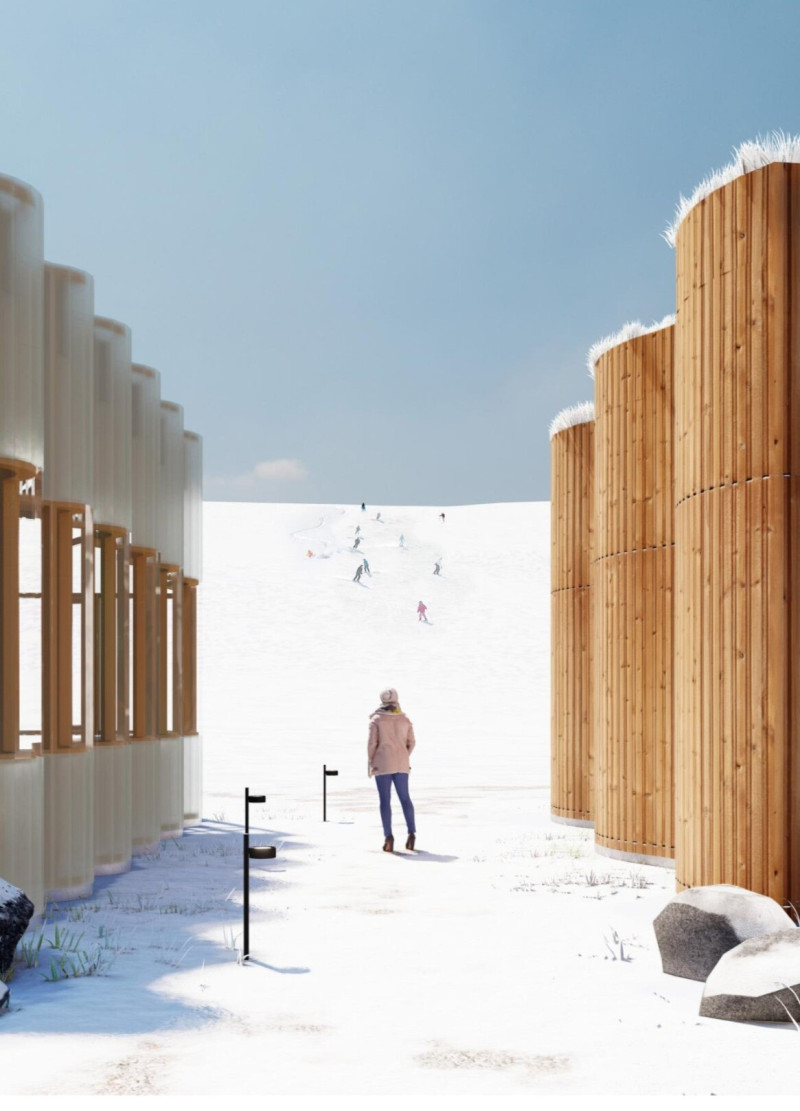5 key facts about this project
This project functions as a multi-use space, accommodating both residential and commercial activities. The architecture incorporates flexible spaces that adapt to various needs, encouraging community interaction and engagement. As a result, the building acts as a social hub where people can gather, work, and live in a cohesive environment. This dual functionality not only enhances its practicality but also enriches the urban experience, promoting a blended life of leisure and productivity.
Upon entering the project, one is greeted by a carefully curated sequence of spaces that are designed to foster a sense of flow and connection. The design strategically utilizes large, expansive windows that invite natural light into the interior, creating a warm and welcoming atmosphere. The layout emphasizes open, communal areas that encourage collaboration and socialization, while private spaces are thoughtfully positioned to ensure comfort and privacy. This intentional planning reflects an understanding of the interplay between social dynamics and spatial design.
The materiality of the project plays a crucial role in expressing its identity. A combination of concrete, glass, and sustainable wood captures the essence of contemporary architecture while grounding the building in its environment. The use of concrete provides structural integrity and longevity, while the glass facades create transparency and visual openness. This transparency not only enhances the building's relationship with its surroundings but also promotes a connection between indoor and outdoor spaces. Reclaimed wood accents add a touch of warmth and sustainability, linking the modern design with a respect for nature and resource conservation.
One of the unique design approaches utilized in this project is the incorporation of green roofs and terraces that facilitate urban agriculture. This initiative not only contributes to sustainable design practices but also supports biodiversity in the urban setting. These green spaces serve as both aesthetic elements and functional gardens, allowing residents and visitors to engage with nature and enjoy fresh produce right at their doorstep. The design thus reflects a progressive vision that integrates ecological considerations into the heart of urban living.
Another notable aspect of the project is its commitment to energy efficiency. The design incorporates an array of passive strategies, such as strategic shading devices and high-performance glazing, to optimize energy usage throughout the year. These features reduce the reliance on artificial heating and cooling, promoting a more sustainable lifestyle for its inhabitants. Moreover, the building’s orientation takes advantage of the natural flow of wind and sunlight, enhancing comfort while minimizing energy costs.
The project's overall identity is further accentuated by its thoughtful approach to public art and community spaces. Integrated artworks and installations are woven into the architecture, enriching the experience of the users and offering opportunities for cultural expression. This emphasis on art fosters a sense of belonging and pride among the community, echoing the project’s overarching aim to enhance community interaction.
For those interested in delving deeper into this project, exploring the architectural plans, sections, and additional design details can provide further insight into the thoughtful decisions that shaped its realization. This architecture project not only demonstrates a sophisticated understanding of modern design principles but also showcases a sincere dedication to contextual awareness, sustainability, and community engagement. The multifaceted layers of this design await further exploration, inviting readers to appreciate the intricate details that comprise its architectural narrative.


























